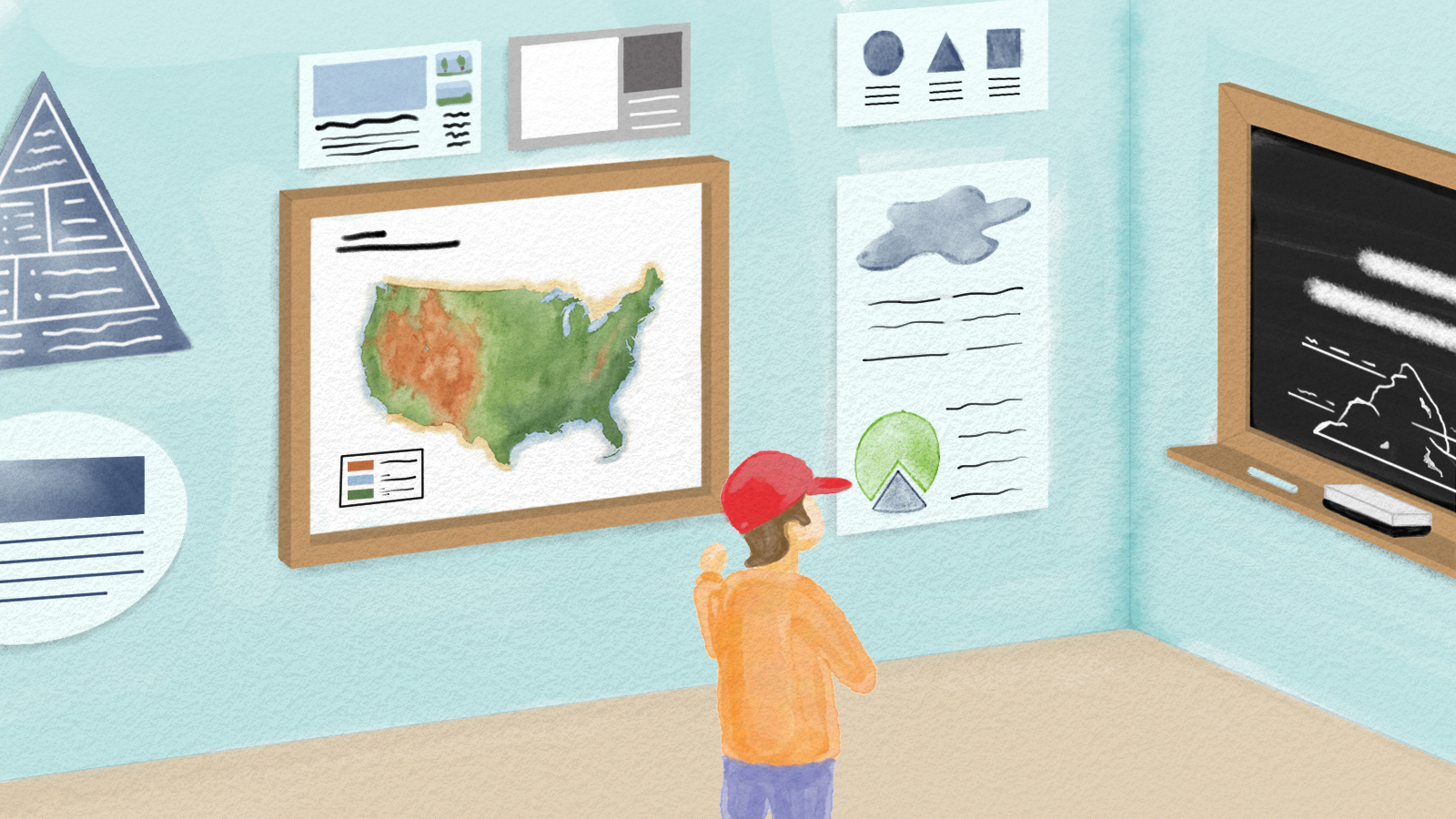
A recent conversation with a seven-year-old has given me a lot to think about. I started with the typical questions and eventually worked my way to the topic of school. “What do you think of school?”
His answer was immediate. “I don’t like it. It’s boring. All we do is reading and math. And science. No history. Why can’t we do history?”
I was surprised at his vehemence. I stalled by asking him what he liked about history. His face lit up and he said, “I like the Revolutionary War.” He proceeded to quiz me about my knowledge of musket balls fired from guns of the Revolutionary period. My knowledge was woefully inadequate, but he did his best to fill in the gaps.
Social studies in the elementary classroom has been marginalized in the shadows of mathematics and literacy instruction because of both time allocation and accountability practices (Fitchett, Heafner, & Lambert, 2014). To address my young friend’s concern, we must do more in small amounts of time. Classrooms are busy places with limited time and resources, making the challenge to “do more.” Tricky indeed. Yet, my young friend demonstrated a natural curiosity for social studies, so part of the answer to “doing more” may be found in providing more access and creating spaces where students can wonder and feed their own curiosity. In the rest of this blog, I will consider the items we display in our classrooms as one way to provide students with more access to social studies content.
Displays Make Social Studies Part of the Visual Environment
One way I begin to integrate more social studies into the classroom is by creating purposeful displays aimed at increasing access and interest. O’Mahony, C., & Siegel, S. (2008) remind us that children’s learning and interest benefit from objects they can touch.
Artifact Display
Organize a display of artifacts, and group them by topic or time. For example, as students are getting ready to study their community, group artifacts or replicas together to represent various tools used in the community over time. Allow students to guess what the artifact is, what it was used for, when it was used, and who used it. One activity to use in the classroom shows students how to date pennies by placing them in a coin book. As students become interested, opportunities for multiple questions and interests arise. For example, most coin books have multiple spaces for pennies minted in 1982. People started keeping—even hoarding—pennies as they became worth more because that was the year that the U.S. Mint changed the materials that are in the penny from almost 100% copper to 97.5% zinc and 2.5% copper alloy because of the skyrocketing price of copper. However, the three separate Mints did not begin producing the new pennies at the same time; thus, for an avid coin collector, there are seven separate pennies made in 1982 to amass, distinguishable only by weight and with careful observation.

Map It!
Start simply with a world map, a United States map, and a state map. When reading a book together as a class, locate the setting on the map and mark it with the title of the book. Alternately, consider mapping the place where the author was born. Choose a book that is about a different country, or by an author from a different part of the United States or world for the whole class to read.
Each week, let one student pick a spot on the map or blindfold them and have them point to a location. Look up one or two things about that location and share it with students.
Don’t forget the oceans! Robert Ballard, the person who discovered the wreck of the Titanic, leads the Corps of Exploration. These researchers have concluded that 80% of the ocean floor still remains untapped. They created a live feed of their mapping explorations, supported by video available when they are in port. Consider tracking their progress on the map, supported with drawings or pictures of their discoveries.
Tracking Time
Create a timeline. As students read stories in language arts, encourage them to find the year it was written and some historic events of the era. Use the timeline to play, “Would You Rather?” after multiple events have been added. For example, ask students, “Would you rather live in 1900 or 1800?” and have them explain their answers.

Photo: iStock by Getty Images/FatCamera
Curating Displays
Displays work best when they are changed frequently, referenced often, and when students take part in making them. Consider having one student act as a “Timeline Technician” in charge of listening for events that can be added to the timeline. Invite students and their families to make displays that can be exhibited in the classroom for a “limited showing.” Select a theme such as family histories or cultural connections and provide suggestions for items to display.
Meeting C3 Standards
The displays described in the previous sections align with the following C3 Dimensions:
Dimension 1: Developing Questions and Planning Inquiries
Developing good questions depends on genuine curiosity. Displays help create a foundation for inquiry by honoring students’ curiosity and allowing them to share something they learn with others.
Dimension 2: Applying Disciplinary Tools and Concepts
Dimension 2 includes the many disciplines of social studies. Use the displays to highlight different dimensions—Use maps and globes to emphasize geography, timelines and artifacts to emphasize history, tables and charts of employment rates to highlight economics, or current events articles to emphasize civics.
Dimension 3: Evaluating Sources and Using Evidence
Timelines and other visual displays offer students concrete ways to organize and use evidence from multiple sources.
Ultimately, focusing on displays builds students’ foundational understandings within the C3 Framework.
Displays offer opportunities for incorporating more social studies into the classroom. Additionally, displays help engage students with social studies in motivating ways, encourage their curiosity, and support their understanding of core social studies standards.
Explore thousands of C3 aligned activities
Get a free trial of Active Classroom.
References
Fitchett, P. G., Heafner, T. L., & Lambert, R. G. (2014). Examining elementary social studies marginalization: A multilevel model. Educational Policy, 28(1), 40-68. Available online here.
O’Mahony, C., & Siegel, S. (2008). Designing classroom spaces to maximize social studies learning. Social Studies and the Young Learner, 21(2), 20-24.
Dr. Dixie Massey is the program coordinator of the reading endorsement at the University of Washington where she also teaches courses in the Department of Language, Literacy, and Culture. She has published in such journals as Social Studies and the Young Learner, The Reading Teacher, and The Journal of Adolescent and Adult Literacy. She is co-author of the curriculum series, Comprehension Strategies for World History and U.S. History in the Social Studies; Targeted Vocabulary Instruction, and the Seeds of Inquiry series published by Social Studies School Services.

I stumbled my way to your blog. Though it was an accident, I am thankful I did. I am currently taking my methods for social studies course at Texas Christian University in Fort Worth. I am thrilled to have found your blog, Professor Massey. It offers so much detail in a way I can easily grasp. Thank you for doing this!